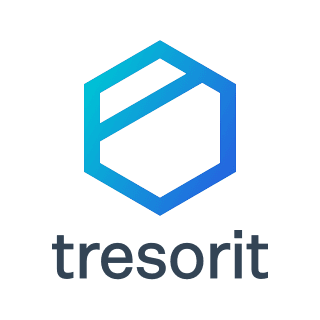In the world of document management, finding the right tool can be a game-changer for your business efficiency and security. Today, we’re comparing Tresorit and LogicalDOC, two powerful solutions in the field. Which one is the right fit for you? Let’s dive into their features, starting with one of the most critical factors—security.
| Tresorit | LogicalDOC |
|---|---|
 |  |
| G2 Score -4.5 out of 5 | G2 Score -4.4 out of 5 |
| TrustRadius Score -9.8out of 10 | TrustRadius Score -8.2 out of 10 |
Security: Tresorit vs. LogicalDOC
Tresorit’s Security Excellence
When it comes to security, Tresorit is often lauded as one of the best. Its approach is heavily focused on providing top-tier encryption and data protection. Tresorit uses end-to-end encryption, ensuring that your files are encrypted before they leave your device and remain encrypted until they reach their intended recipient. This means that no one, not even Tresorit, can access your data in transit or at rest.
Moreover, Tresorit employs zero-knowledge proof technology. This means that Tresorit has no knowledge of your data’s content or even the encryption keys used to secure it. This adds an extra layer of security, as it prevents any potential internal access to user data.
For businesses concerned with data sovereignty, Tresorit provides the option to choose data residency, allowing users to select where their data is physically stored. This can be crucial for compliance with local data protection laws.
LogicalDOC’s Security Features
LogicalDOC, while perhaps less focused on the encryption side than Tresorit, offers a robust set of security features suitable for most business environments. LogicalDOC uses industry-standard AES encryption to protect documents stored within its system. Although it does not offer end-to-end encryption, its security measures are sufficient for ensuring that data is protected against unauthorized access.
One of LogicalDOC’s key features is its comprehensive access control system. It allows administrators to set detailed permissions on a per-document or per-folder basis. This granularity ensures that only authorized personnel can access sensitive information, which is essential in environments where information leakage can lead to significant issues.
Additionally, LogicalDOC includes an audit trail feature that records every action taken within the system. This not only enhances security by providing visibility into document handling but also aids in regulatory compliance by ensuring that all transactions can be reviewed and audited.
Pricing and Subscription Models: Tresorit vs. LogicalDOC
In selecting a document management system, understanding the pricing structure and what each plan offers is crucial for budgeting and determining the best value for your organization. Let’s dive into the pricing and subscription models of Tresorit and LogicalDOC to see how they compare.
Tresorit’s Pricing Options

Tresorit is known for its premium pricing, reflecting its strong focus on security and privacy. The company offers several tiers of service, each designed to meet the needs of different user groups—from individual professionals to large enterprises.
- Individual Plans: These plans are ideal for solo professionals who need secure cloud storage and file sharing. Features include end-to-end encryption, secure file sharing, and access from multiple devices.
- Business Plans: Aimed at small to medium-sized businesses, these plans offer additional features such as admin controls, user and group management, and support for multiple users. The price increases with the number of users and storage capacity required.
- Enterprise Plans: These are customized solutions that provide advanced options for larger organizations. Features can include advanced admin controls, dedicated account management, on-premises deployment options, and comprehensive training packages.
Tresorit’s pricing is generally on the higher side due to its emphasis on advanced security and data protection features.
LogicalDOC’s Pricing Structure

LogicalDOC offers a different approach with a focus on providing flexible and scalable solutions, suitable for businesses of all sizes. It provides both cloud-based and on-premises deployment options, which is a significant consideration for organizations with specific data handling policies.
LogicalDOC offers a free Community Edition, which is an open-source solution that provides basic document management capabilities. This edition is ideal for small businesses or startups looking to implement a DMS without initial investment. These editions are designed for small to large enterprises and include more advanced features like workflow management, audit trails, and full-text indexing. Pricing varies based on the number of users and the level of functionality required.
LogicalDOC also offers a cloud service where pricing is based on storage needs and user count, providing flexibility for businesses that prefer not to manage their own infrastructure.
Usability and User Experience: Tresorit vs. LogicalDOC
In the realm of document management tools, the usability and overall user experience play a pivotal role in how effectively a team can adopt and utilize the software. Let’s explore the usability aspects of Tresorit and LogicalDOC to see how they stand in terms of ease of use and user-friendly interfaces.
Tresorit’s User Interface
Tresorit is known for its sleek and intuitive interface. The design is clean and modern, making navigation simple for users of all skill levels. One of Tresorit’s strengths is its straightforwardness, allowing users to easily upload, manage, and share files without a steep learning curve. This ease of use extends to its mobile apps, which are highly rated for their functionality and design, ensuring that users can securely access their files from anywhere, on any device.
Another area where Tresorit excels is in the integration of its security features into the user interface. Options for setting permissions, sharing files, and monitoring activity are all seamlessly integrated, making complex security measures accessible without overwhelming the user. This combination of advanced security and simplicity makes Tresorit particularly appealing to businesses that need robust protection but also value a clean, uncluttered user experience.
LogicalDOC’s User Interface
LogicalDOC, on the other hand, focuses on providing a feature-rich platform that caters to businesses with complex document management needs. Its interface is packed with tools and options, from workflow automation to extensive metadata support, which can be incredibly powerful but may require a bit more time for new users to learn.
Despite its complexity, LogicalDOC has made significant strides in making its platform more accessible. The user interface is configurable, allowing organizations to tailor the layout and available tools to match their specific workflows. This flexibility can be a double-edged sword: it allows for extensive customization but can also lead to a cluttered experience if not managed properly.
LogicalDOC also provides strong support for collaboration within documents, including version control, commenting, and even chat features within the document management system. These tools enhance team productivity but can add to the learning curve for teams not accustomed to such an integrated approach.
Integration Capabilities: Tresorit vs. LogicalDOC
A document management system’s ability to integrate with other software tools and systems is crucial in today’s interconnected tech environment. Let’s examine the integration capabilities of Tresorit and LogicalDOC to determine how well they play with other applications and enhance workflow efficiency.
Tresorit’s Integration Features
Tresorit, while primarily focused on security, offers a decent range of integration options that can help streamline operations in a secure environment. Tresorit integrates directly with Microsoft Office apps, enabling users to open and save Office files within Tresorit’s secure environment. This is particularly useful for businesses that rely heavily on Office tools and need to maintain high security for their documents.
Tresorit also offers an integration with Outlook through an add-on that allows users to send encrypted links instead of attachments, enhancing the security of communications. For larger organizations, Tresorit supports SSO integration, which simplifies the user authentication process and enhances security by minimizing password fatigue. While Tresorit’s integrations focus on enhancing its core functionalities of secure file storage and sharing, it may not offer the breadth of integrations found in more collaboration-focused tools.
LogicalDOC’s Integration Capabilities
LogicalDOC shines when it comes to integration capabilities, especially for businesses looking for a document management system that can seamlessly connect with their existing IT infrastructure. LogicalDOC supports CMIS, an open standard that allows different content management systems to interact with each other. This is ideal for organizations using multiple CMS platforms.
LogicalDOC can integrate with various ERP systems, allowing for the synchronization of documents related to business processes and operations. LogicalDOC provides extensive API support, enabling custom integrations tailored to specific business needs. This flexibility is crucial for businesses that require unique workflows or have specialized software requirements. Integration with email platforms allows users to manage emails directly within the document management system, turning emails into documents or storing attachments with related documents.
Feature Set and Functional Capabilities: Tresorit vs. LogicalDOC
When selecting a document management system, it’s vital to consider the range of features and functional capabilities each platform offers. This comparison will delve into what Tresorit and LogicalDOC bring to the table in terms of their feature sets, focusing on how these can benefit various business operations.
Tresorit’s Feature Highlights
Tresorit’s primary strength lies in its advanced security features, but its functionality extends beyond just secure file storage. The platform is designed to facilitate secure file sharing and collaboration within and outside an organization. Users can share files and folders with external parties through secure links, which can be protected with passwords, expiration dates, and download limits. This makes Tresorit an excellent tool for businesses that need to share sensitive information securely with clients or contractors.
Additionally, Tresorit supports file synchronization across devices, ensuring that all users have access to the latest versions of documents, regardless of where they are accessing them from. This synchronization feature is backed by Tresorit’s end-to-end encryption, maintaining security across all devices.
Tresorit also offers some administrative tools for business and enterprise accounts, such as user activity tracking, which helps in monitoring and auditing document access and usage. This can be crucial for compliance and security governance, especially in industries regulated by strict data protection standards.
LogicalDOC’s Feature Highlights
LogicalDOC, in contrast, is designed with a focus on enhancing document management efficiency and supporting complex workflows. The platform offers powerful tools for document storage, archiving, and retrieval, including full-text search capabilities that allow users to quickly find documents based on content. This feature is particularly valuable in environments where large volumes of documents are handled and quick information retrieval is crucial.
Moreover, LogicalDOC excels in workflow automation. It allows businesses to define custom workflows that automate the document review and approval processes. These workflows can be configured to match specific operational procedures, reducing manual work and enhancing overall efficiency.
LogicalDOC also integrates document version control, ensuring that users can track revisions and restore previous versions if necessary. This is beneficial for collaborative environments where multiple users are working on the same documents, as it prevents data loss and maintains document integrity over time.
Conclusion
Deciding between Tresorit and LogicalDOC for your document management solution involves a thorough evaluation of what each platform offers in terms of security, usability, integration capabilities, pricing, and overall feature set. Both tools have their distinct strengths, tailored to meet different organizational needs and priorities. Tresorit is best suited for businesses that place a high priority on the security of their documents. With its end-to-end encryption, robust control features, and a user-friendly interface, Tresorit is ideal for industries such as legal, healthcare, and finance, where protecting sensitive information is paramount.
LogicalDOC, on the other hand, offers a feature-rich environment that excels in document handling efficiency and workflow automation. Its strong integration capabilities, comprehensive document management tools, and flexible deployment options make it suitable for organizations that need to manage complex workflows and require a system that can be tailored to specific business processes.
READ NEXT:
- Delivra vs ReachMail: The Best Email Marketing Tool for You
- Tresorit vs iManage Work: The Best Document Management Tool for You
- Tresorit vs Clio: The Best Document Management Tool for You
- 21+ Top Document Management Software for Businesses: A Deep Dive
- HubSpot CRM vs Vtiger CRM: The Best CRM Tool for You
- HubSpot Marketing Analytics vs Heap: The Best Analytics Tool for You






















Comments are closed.